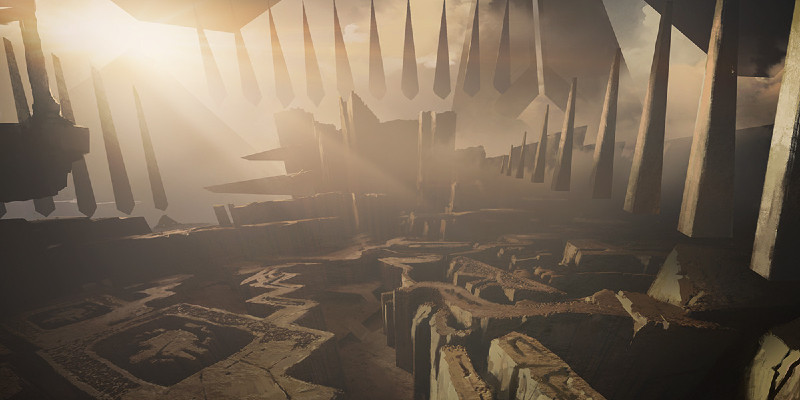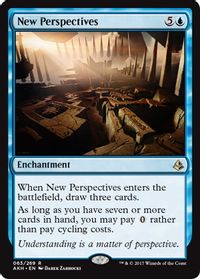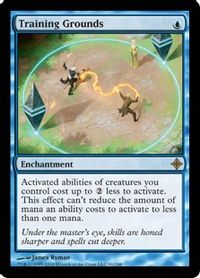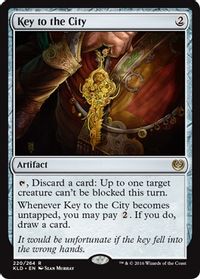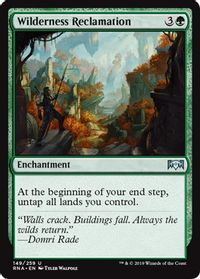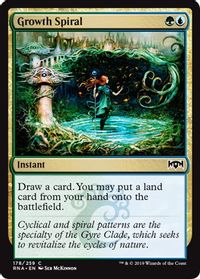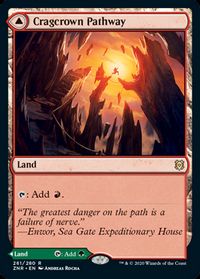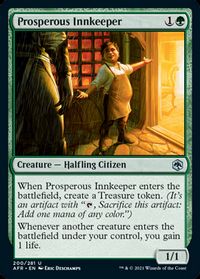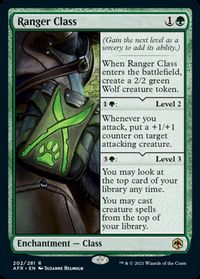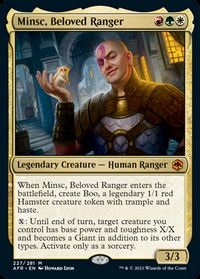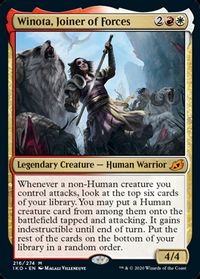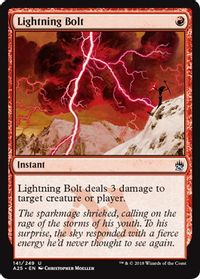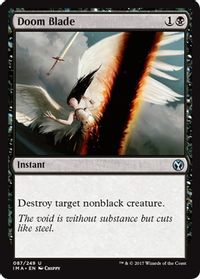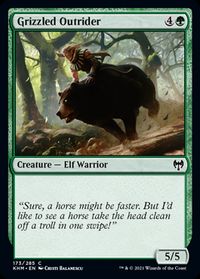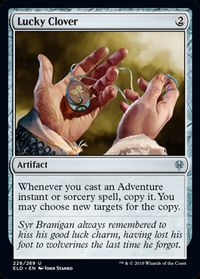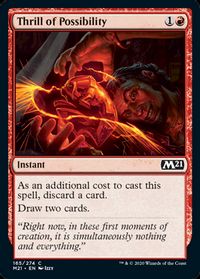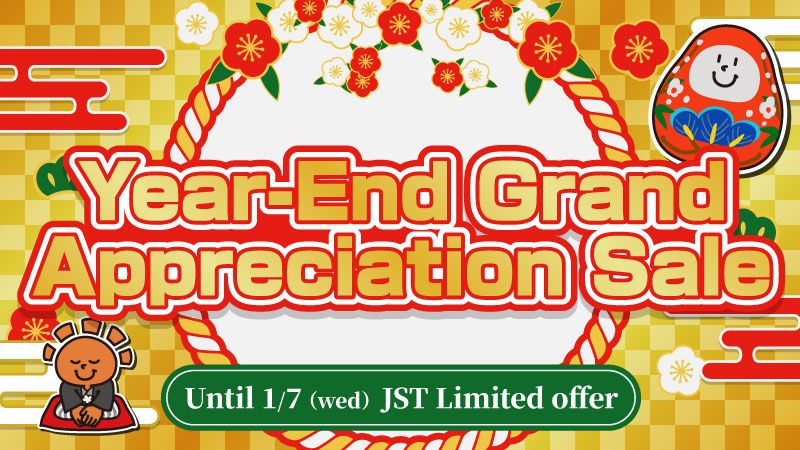Introduction
When you strip away the details, improving is always just developing a useful skill. The difficulty is knowing what skills to develop. My personal plateaus didn’t come from an unwillingness to work hard or improve, but simply a lack of direction. I’d grind Magic Online for hours, playing familiar decks against weaker opposition, wondering why I wasn’t breaking through competitively despite winning 75% of my matches online. But whenever I identified a skill I needed to work on, progress came fast and easy.
Giving prescriptive advice on improving is impossible, since everyone comes from a different background and has different strengths and weaknesses. That’s why my favorite article topic is applying concepts from other fields to competitive Magic. My hope is that by discussing a diverse collection of perspectives and ideas, everyone can walk away with at least one useful insight.
This introduction is a longwinded way to say that this will be another one of those articles. Today, I’d like to discuss how playing other games like chess, Hearthstone, and bridge helped me improve at Magic.
I like to think of playing different games as weight training. Most turn-based strategy games feature the same high-level mechanics: asymmetric information, tempo, understanding uncertainty, and so on.
However, just like different exercises target different muscles, these components matter more or less in different games. Bluffing, for example, is a minor component in Magic, but a major component in poker. Studying poker for a week will give you a better and more complete understanding of bluffing than playing Magic for a year.
As a new player, working on the core skills in Magic is more valuable – that’s why they’re core. But if you’re a good player looking to be great, you need to target your weaknesses. Playing other games is a fun and efficient way to identify your weak points and strengthen them.
Key to the City
Hearthstone uses a partial mulligan system where you can exchange any number of cards from your opening hand for new cards exactly once. Because mulliganing this way is basically free and Hearthstone doesn’t have lands, you just get another mana every turn instead, proper mulliganing is very aggressive. If you watch top Hearthstone players, you’ll see they mulligan literally everything that’s not one of the 2 best cards in their deck.
The most common mistake new Hearthstone players make by far, particularly coming from Magic’s punishing mulligans, is not mulliganing aggressively enough. They’ll keep random 2, 3, and 4-drops, figuring they have a perfect curve. And of course, it’s hard to systematically weigh the risk of a dysfunctional hand versus the upside of your key cards. But when you try mulliganing aggressively, it starts to “feel right” quickly. You’ll miss your 3-drop or 4-drop and have to scrap together off-curve plays more often, but the games where you have your best cards will feel easier despite that.
The biggest change in my mulliganing after learning Hearthstone was thinking of hands in terms of key cards. On some level, this is just intuitive: hands with your best cards are better than hands that don’t. The practice is muddy though.
For example, with 《Wilderness Reclamation》 in Theros Standard, was it right to keep 6 lands and 《Growth Spiral》? A lot of players I know mulliganed that hand, but my Hearthstone experience led me to regularly keep it. You’re only 40% to see 《Growth Spiral》 in any individual 7-card hand, the spells and even lands in Reclamation were so powerful that most of your draws were good, and turn 2 《Growth Spiral》 was the entire game in many matchups.
Here’s another example, a hand from the most recent Arena Open that my friend Daniel posted to a group chat. He was playing Naya Winota and his 7-card hand was 《Cragcrown Pathway》; 《Lair of the Hydra》; 《Selfless Savior》; 《Prosperous Innkeeper》; 《Ranger Class》; 《Minsc, Beloved Ranger》; 《Winota, Joiner of Forces》.
If you evaluate this hand using typical Magic heuristics, it’s a clear mulligan. You’re missing permanent white mana and have 3 white cards, and one of the 2 cards you can currently cast is a lategame mana sink when you only have 2 lands. The white cards are all creatures, not even removal you could use to catch up after falling behind.
Hearthstone will teach you that these hands just work out more often than not. When you have a start as good as Prosperous Innkeeper into Winota, it often just doesn’t matter what the rest of your hand is. And even if they answer your Winota and you don’t get an easy win, you’re more likely to draw white mana or useful spells than bricks.
Biggest Minion All Face
My friend Bobby once told me that the best piece of advice I’d ever given him was to pay less attention to what his cards did and more attention to what they cost. Like mulliganing for your key cards, this is another concept that’s intuitive and well-documented in Magic, but the game engine often undersells its importance.
Magic has tons of spells that trade up on mana, like the classic 《Doom Blade》, and lands mean that both players usually have some level of mana trouble disrupting their curves. Hearthstone has fewer cards that trade way up the chain and the mana system means that the player who gets ahead early stays ahead, often until they win the game.
If this is a new concept to you, the basic idea is that even if your best play on a given turn is a cheaper spell, it’s often better to play a more expensive card anyway because doing so will open up even more profitable options down the line.
The canonical example is your opponent having a 《Serra Angel》 in play when you have a 《Doom Blade》 and 《Grizzled Outrider》 in hand with 5 lands.
For completeness, let’s say you’re at 10 and your opponent is at 20. Taking 4 from the 《Serra Angel》 is a big cost when you’re at 10, so killing it immediately would certainly be better if 《Doom Blade》 and 《Grizzled Outrider》 both cost 5. The problem with casting 《Doom Blade》 is that you’re committing to casting 1 spell a turn for the foreseeable future, falling behind to whatever your opponent develops next. If you cast the 《Grizzled Outrider》, even though it’s a worse play within the turn cycle, suddenly every 3-mana card in your deck is a great draw that will let you double-spell to catch back up.
In Magic, you’ll win more in that situation when you cast the 《Grizzled Outrider》, but not much more. Your opponent might be flooded and miss their development, rewarding you for your suboptimal play.
In Hearthstone, at least circa 2016, your opponent would almost always punish you for playing off-curve like that. With hands of entirely spells, the ways options open and close when you succeed or fail to clear your expensive cards are more obvious. You start to plan your turns around spending as much mana as you can, and eventually start to feel the pain of every unspent mana deep in your bones.
Countergambit
There’s this collective fantasy of chess as the most strategic game, where there’s no luck or randomness and the player with the better plan always wins. The reality is the exact opposite.
Even though there’s no explicit randomness in its game engine, chess is so complicated that I’d argue there’s actually more luck than in games like Magic. Even the very best players don’t understand all the nuances of chess, and at lower levels players essentially make moves at random until someone spots a game-winning tactic. The fun in chess is learning to make slightly more sense out of the chaos.
Even though Magic isn’t as complicated as chess, it’s still impossible to figure out the best play with 100% certainty. Just having an opponent with tendencies and preferences means there’s never an objective best play. Playing chess more taught me to embrace that complexity instead of trying to master it.
One of the biggest hindrances to my early development in Magic was closing my mind to new possibilities because I had these rigid heuristics for good plays. Like sure, a particular line may give you the most outs to win, or beat the widest range of your opponent’s holdings. But it may also force your opponent to make the right play instead of giving them room to make a mistake.
When I started playing chess, I’d constantly time out trying to make sure all my pieces were protected, that I wasn’t missing any simple tactics. Not only was I losing on time this way, I was also making more mistakes. Eventually, instead of trying to avoid mistakes, I started looking for good moves. I’d make moves just to get into positions I hadn’t seen before. I had to accept my mistakes and keep exploring, because that’s all there is in chess.
Mirror, Mirror
Contract bridge is an old gambling game that was later adopted competitively. Bridge is a great game for improving at reading hands and tracking information, but the most interesting part of bridge for me is the competitive system, called duplicate bridge.
Opening hand strength is an enormous factor in bridge, and many hands are deterministically decided by card distribution. To counteract this, the opening hands in bridge are predetermined and every player in a tournament will play each hand once.
The players are judged not on their raw score for each hand, but how well they played the hand compared to their competitors. Even if a player earns 550 points in a hand, one of the highest possible scores, it’s a neutral result if the other players in the tournament achieved the same score.
Just learning about duplicate bridge improved my perspective on Magic tournaments. Magic is a deep and skill-testing game, but Magic tournaments are also incredibly random. Even if you’re the best player in the room with the best deck, you’re less likely to put up a top finish than not.
After learning about bridge, instead of looking at my tournament results purely in terms of wins and losses, I started asking myself what result other players would have had with my hands and my pairings. When I did badly, if I couldn’t identify any mistakes, then I accepted I did the best I could (with the caveat that I was probably missing something). If I could find a mistake, that was something actionable to improve on. With good results, did I make good decisions that I should replicate in the future, or did I just get lucky?
There’s a thin line between this line of thinking and blaming luck, but I’ve benefited from walking the line. Taking responsibility for every bad result helps in the short run, and I’ve certainly made mistakes in every tournament I’ve ever played, but I found that level of fatalism unsustainable and ultimately counterproductive.
If you mentally attribute your bad result to sequencing your lands incorrectly in round 7 instead of getting paired against your worst matchup 3 times, that’s just as delusional as blaming all of your losses on manascrew.
Thinking in terms of the bigger picture can even help you identify areas to improve on. Instead of going back to the well on land sequencing, consider whether your deck selection was the real problem.
Balance
Along similar lines, there’s a famous aphorism in poker that if nobody ever calls your bluffs, then you aren’t bluffing enough. I love applying that saying to other contexts, particularly ones where the analogy doesn’t fully track – if you’ve never missed a flight, you’re getting to the airport too early. But there’s also an important kernel of truth in it. The big edges in Magic, and in life in general, are at the edges.
In other words, everyone makes the obviously good plays. What distinguishes good and great players are the plays that might be mistakes. I’m not sure keeping 6 lands and 《Growth Spiral》 was right, but those are the places you need to look. And when you fail after trying something new, you should celebrate that you found an edge case.
Conclusion
I’ve been playing a lot of Legends of Runeterra lately, the League of Legends card game. My pet hobby in that game is naming my decks after the Magic deck they’re most similar to. Runeterra has a bunch of unique mechanics, so finding the overlaps is surprisingly difficult and satisfying. I need to break down the mechanics in both Magic and Runeterra to their core components.
As you play more games, you’ll come to understand how games work as a general concept. You’ll find there’s more and less overlap between games than you expected, and ultimately be able to understand what makes a game tick after playing it 2 or 3 times.
The experience is something between seeing the matrix and getting on the scale after dieting and exercising. Playing new games is great not just for finding and improving undeveloped skills, but also applying what you already know.
As always, I hope I’ve given you at least one thing to think about. Best of luck.
Allen Wu (Twitter)


